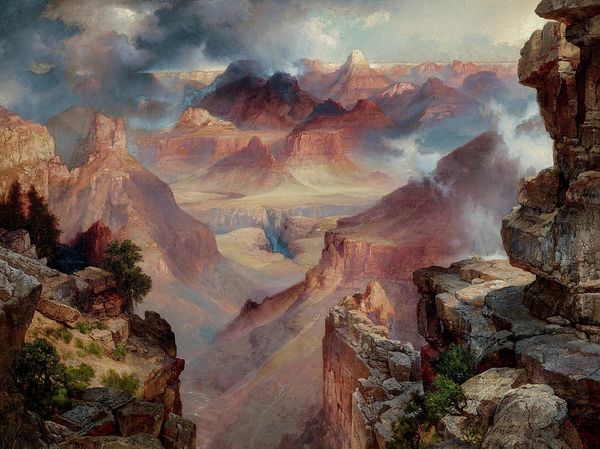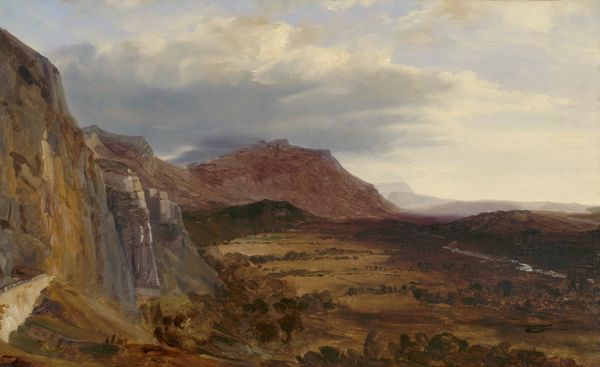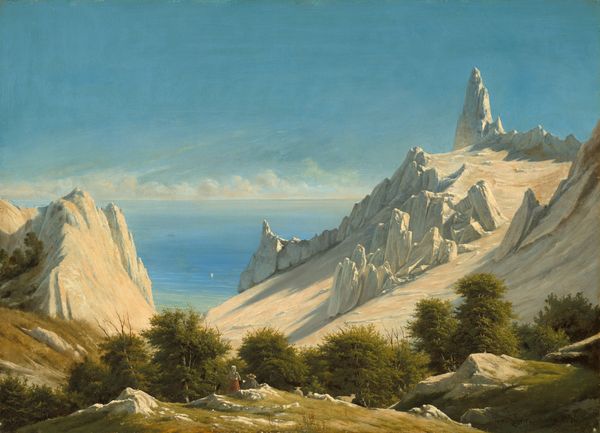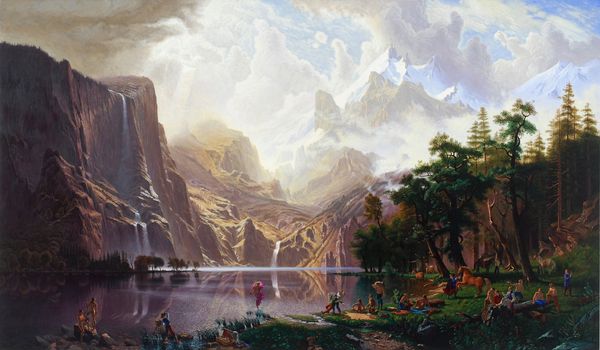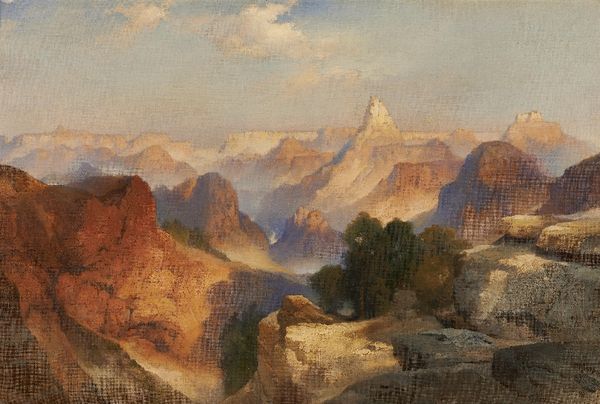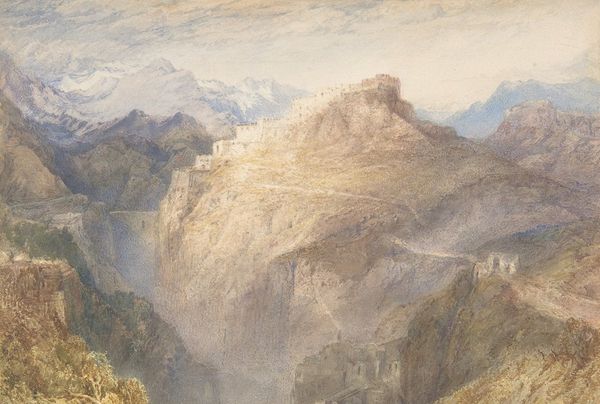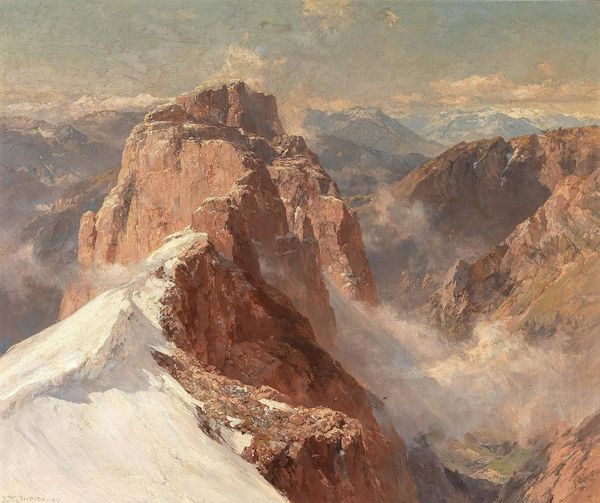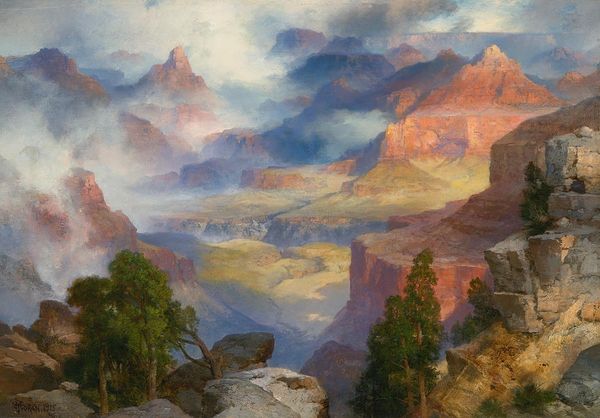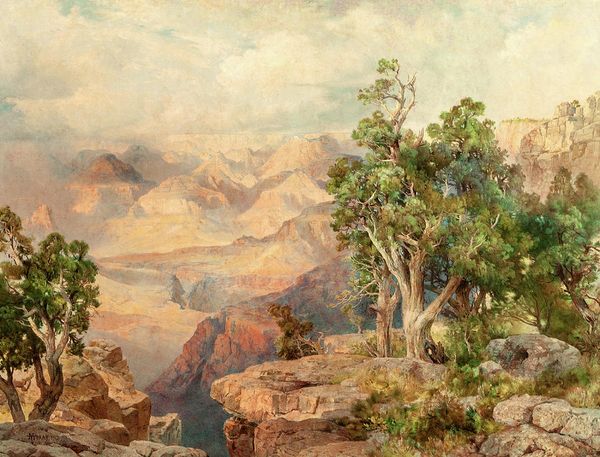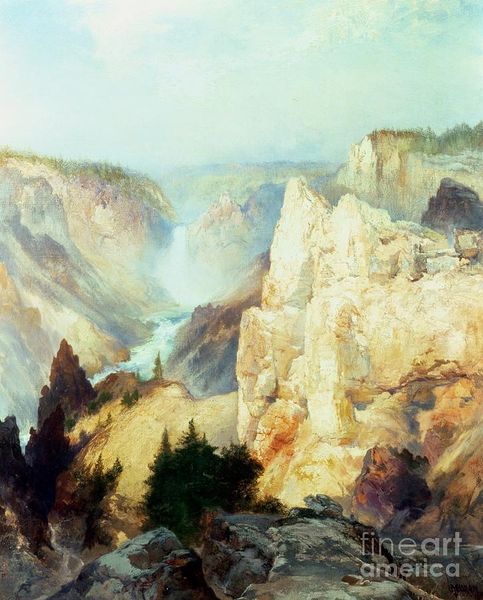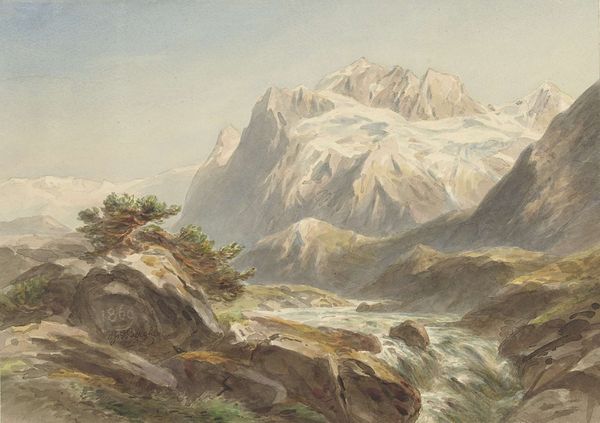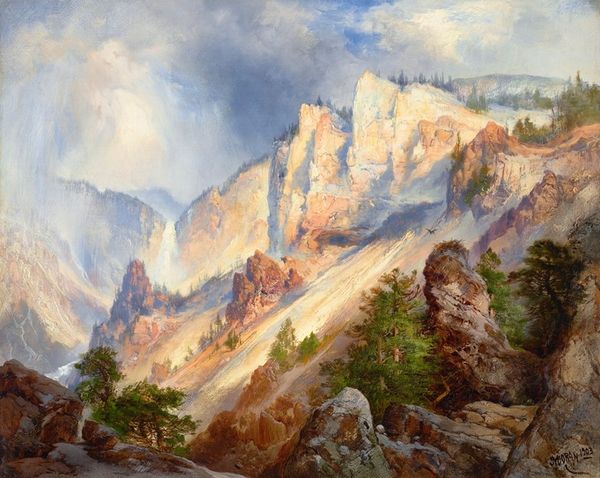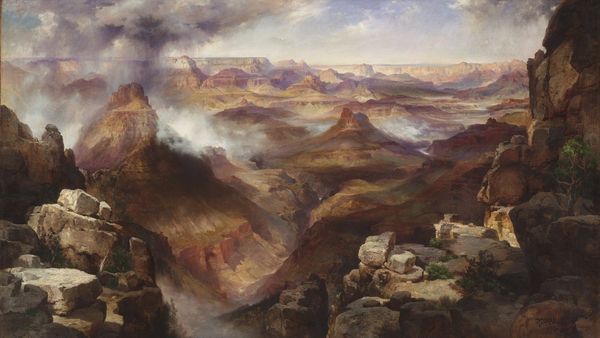
Copyright: Public Domain: Artvee
Editor: This is Thomas Moran's "The Castle Rock, Green River, Wyoming," painted in 1913 with oil paints. The muted colors give it this otherworldly, almost dreamlike feel. The composition with the dramatic rock formations juxtaposed against the riders down below is pretty amazing. How would you interpret it? Curator: It’s funny, you mention otherworldly... for me, that feeling comes from the way Moran isn’t just painting a landscape, he's painting an *experience* of a landscape. He wasn’t necessarily trying to capture the absolute realism, more the sheer grandeur, that sort of humbling feeling of being face-to-face with the American West. Does that make sense? Editor: Totally. I guess that almost romantic way of looking at the landscape is common for the Hudson River School painters? Curator: Exactly! These artists weren’t just documenting; they were trying to convey a sense of awe, you know, this idea of nature as this almost divine space. It also reflects this sense of manifest destiny – a belief that expanding westward was pre-ordained and therefore infused with this special significance. Do you notice how the people in the foreground look so tiny, and insignificant against this geological cathedral? Editor: Yes, it emphasizes that vastness for sure. I hadn’t really considered the manifest destiny angle before. It gives it a whole different weight. Curator: That's it! For me, Moran invites us to think about our place in nature, which is an important consideration that connects directly with our American values. What is there not to love?! Editor: Well, I love the painting even more now, considering those historical and artistic perspectives. Thanks for sharing!
Comments
No comments
Be the first to comment and join the conversation on the ultimate creative platform.

